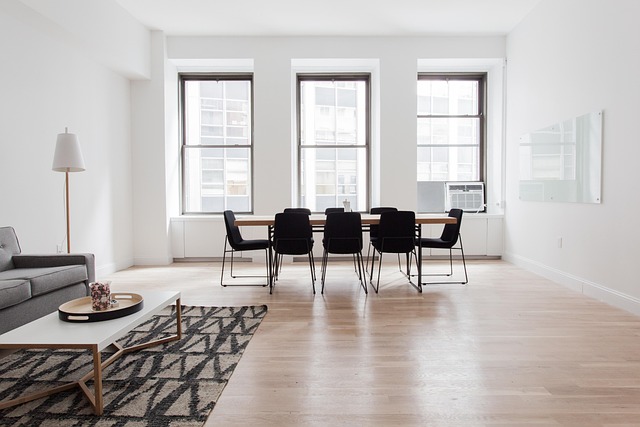DIY home improvements can save money but often come with cost overruns and planning mishaps. Common mistakes include overlooking local permits (leading to legal issues), hiring unlicensed contractors (subpar work/hidden fees), inaccurate measurements (waste/inefficient spending), and inadequate budgeting. To avoid these DIY renovation errors, homeowners should research local regulations, obtain necessary permits, create detailed budgets, seek expert guidance when needed, and carefully plan measurements. This proactive approach minimizes budget overruns, maximizes project value, and prevents damaging impacts on the home's value or financial health.
“Avoiding DIY Disasters: Navigating Home Improvement Pitfalls for Maximum Value. Discover the top DIY errors that can significantly impact your home’s value. From budget overruns and permit neglect to overlooking hidden structural issues, this guide highlights critical mistakes to watch out for. Learn how staying on track with budgets, understanding local codes, and hiring licensed professionals can prevent costly remodeling pitfalls. Enhance your home improvement projects with expert insights on planning, research, and meticulous execution.”
Budget Overrun Mistakes: Staying on Track
When embarking on a DIY home improvement project, one of the most significant challenges homeowners often face is staying within budget. Budget overrun mistakes can be detrimental to your financial stability and the overall value of your home. Common pitfalls include skipping essential permits, which can lead to legal issues and fines, and hiring unlicensed contractors who may deliver subpar work or charge hidden fees.
Moreover, measurement mistakes in DIY projects are a frequent oversight. Incorrect measurements can result in inefficient material purchases and subsequent wastage, impacting both your budget and environmental footprint. To avoid these renovation errors, thorough planning is crucial. Create a detailed budget, seek professional advice when needed, and always ensure compliance with local building codes to prevent costly DIY renovation mistakes that could lower your home’s value.
– Identifying cost overruns before they happen
Identifying potential cost overruns before they escalate is a crucial step in any home improvement project. Many DIY enthusiasts and homeowners often fall into common traps, like skipping necessary permits, which can lead to hefty fines and delays. Remodeling pitfalls abound; from hiring unlicensed contractors who cut corners to measurement mistakes in DIY projects, these errors not only compromise the quality of the work but also significantly impact your budget.
Proper planning involves researching local regulations, obtaining the required permits, and creating a detailed budget that accounts for potential unexpected expenses. Measuring spaces accurately is essential to ensure materials are ordered correctly, avoiding unnecessary waste and costly returns. By anticipating these issues and taking proactive measures, you can minimize budget overruns and ensure your home improvement projects enhance, rather than diminish, your property’s value.
– Setting realistic budgets and creating contingency plans
When taking on DIY home improvement projects, setting realistic budgets and planning for unforeseen expenses are essential to avoid damaging your home’s value. Impulsive spending and inadequate financial preparation can lead to significant budget overruns, resulting in subpar materials or cutting corners on crucial aspects of the project. A sound financial strategy involves creating a detailed budget that accounts for all costs, including labor, materials, permits, and potential contingencies.
Another common pitfall is skipping essential permits, which can result in legal issues and delays. Failure to obtain the necessary permissions from local authorities may also affect your home’s resale value. Additionally, hiring unlicensed contractors or overlooking professional advice on structural aspects of a renovation can lead to costly errors. Measuring spaces incorrectly can cause furniture misfit or design flaws, emphasizing the importance of meticulous planning.
– Common areas where costs can easily escalate
When tackling DIY home improvement projects, a few key areas can easily lead to costly errors and budget overruns. One of the most common mistakes is neglecting to plan thoroughly, especially when it comes to larger renovation projects. Skipping essential steps like researching local permits and regulations or creating a detailed budget can result in unexpected expenses. For instance, starting a project without knowing the full extent of necessary repairs or changes might lead to unforeseen costs as the work progresses.
Another frequent oversight is hiring unlicensed or uninsured contractors, which can be risky. Unscrupulous contractors may charge inflated prices for subpar work, leaving you with a less-than-satisfactory result and potential financial loss. Additionally, many DIY enthusiasts make measurement mistakes, especially when it comes to purchasing materials. Inaccurate measurements can lead to waste and the need to restock, impacting your budget. Always double-check plans, obtain necessary permits, and carefully consider hiring professionals for complex tasks to avoid these common renovation pitfalls.
While DIY projects can be rewarding, it’s crucial to recognize the potential for damage if not executed properly. By carefully planning, setting realistic budgets, and understanding common pitfalls like cost overruns, skipped permits, and unlicensed contractors, you can avoid significant DIY renovation errors that may negatively impact your home’s value. Remember, thorough research and professional guidance are essential components of successful home improvement projects.
